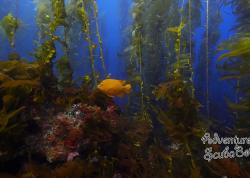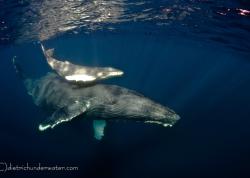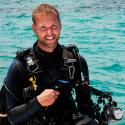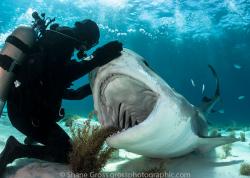Capturing Fast Ocean Action
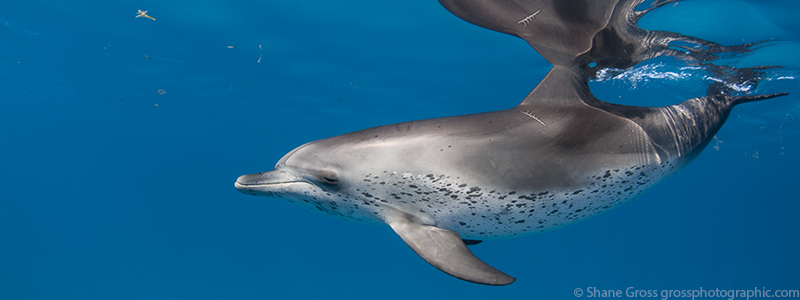
Let’s face it – we humans are pathetically slow in the water. Even Michael Phelps’ top speed of 4.4 mph (7.1 km/h) pales in comparison to a yellowfin tuna’s estimated speed of 45 mph or, the fastest fish in the ocean, the sailfish’s 70 mph. With such a chasm between us, how can we possibly dream of capturing images of these fast animals? Here are a few tips to help you get the most out of shooting the fastest of the fast.
1) Study the Animal's Behavior
The good news is most animals are not travelling at their top speed most of the time. Before you head out to shoot those speedy dolphins or sharks you may want to soak in their behavior as best you can. YouTube, Vimeo and other online video sharing sites are an amazing resource because you can watch how the animal moves under conditions similar to what you may experience.

2) Use a Fast Shutter Speed
Unless you are going for an artistic motion-blur image crank the shutter speed to the max. If you are using strobes find out what your max sync speed is – on my Nikon D90 it’s 1/250th of a second. Most high-end, full frame DSLR’s can go up to 1/320th. If you are not using strobes you can go even faster as long as there is enough natural light. Choosing a fast shutter speed will help to freeze the action and keep your images sharp. While shooting baby lemon sharks for the first time I used 1/160 and still the eye was often not sharp because the pups would turn away at high velocity as soon as they would see my camera. Going up to 1/250 and using strobes made all the difference.

3) Work as a Team
If you are searching for sailfish in the open ocean you cannot do it alone. You will need a good boat captain to get you in position and tell you when to drop in. The more people on the boat looking for birds (the give-away of a baitball) the better chance you have of finding one of the most amazing natural displays on Earth.

4) Be Prepared Before you Hit the Water
If you are jumping in the water with a blue whale (or, hopefully, quietly sliding in) you will not have time to turn on your camera, adjust your settings, take a test shot, etc. Though they are the biggest animal in the world their slow, cruising speed is significantly faster that you can swim even with super long freediving fins. This means the best you can hope for is that the whale swims past you within view – that’s it. If you are in clear blue water in the middle of the day you may already have a good idea what settings you will need. If not, searching out whales can mean long days on the water with lots of down time. Ask the captain to stop for a quick minute and stick your camera over the side and do a test shot to dial in. That way when the whale pops up right next to the boat and your adrenaline starts pumping you can hop in and start clicking.

5) Shoot on Burst Mode
Once you are in the water with your sailfish and baitball you will have very little reaction time. You will basically have to point your wide-angle lens in the baitball’s direction, and when a sailfish approaches hold down the shutter button and hope – the old spray and pray approach. With enough time in the water you will come away with some shots you like.


Conclusion
Shooting fast action is a hit and miss game where good results come about from getting lots of chances and filling up memory cards. So get out there, shoot from the hip and hold down that shutter button. Don’t forget to have fun and enjoy the moment. Sharing the water with these fast animals is a privilege few get to experience.
Further Reading
RECOMMENDED ARTICLES
SUPPORT THE UNDERWATER PHOTOGRAPHY GUIDE:
The Best Service & Prices on u/w Photo Gear
 Visit Bluewater Photo & Video for all your underwater photography and video gear. Click, or call the team at (310) 633-5052 for expert advice!
Visit Bluewater Photo & Video for all your underwater photography and video gear. Click, or call the team at (310) 633-5052 for expert advice!
The Best Pricing, Service & Expert Advice to Book your Dive Trips
 Bluewater Travel is your full-service scuba travel agency. Let our expert advisers plan and book your next dive vacation. Run by divers, for divers.
Bluewater Travel is your full-service scuba travel agency. Let our expert advisers plan and book your next dive vacation. Run by divers, for divers.





